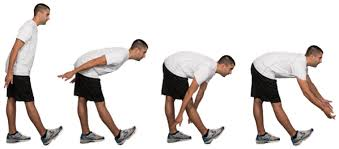How can a Sports Physiotherapist help with IT band syndrome?
- Ben
- Jul 22, 2020
- 4 min read
Updated: Dec 4, 2020
IT band syndrome or ‘runner’s knee’ can often be felt as a sharp pain on the outside of the knee after trying to straighten the leg from a bent position or on loading in walking or running. Usually associated with runners, this is not exclusively a running injury. As a sports physiotherapist, I will help you to understand the underlying causes and provide some of my most frequently prescribed exercises to combat it.
What is the Iliotibial band?

The Iliotibial band or IT band is a connective tissue that runs along the outer side of your thigh. It starts up near your hip and takes expansions from the glute medius and tensor fascia lata (TFL) right down to the outside of the knee, where it crosses the knee joint. Along with the band, the outer sweep of the quads and outermost portion of the hamstring have fascial connections forming a very strong connective tissue. At the insertion site just below the knee, there is a fat pad, this fat pad helps smooth movement of the band and knee. This is believed to be the source of the pain in a highly irritable IT band syndrome, otherwise known as Runner’s knee. The band can become very taut as a result of muscular imbalance, a lack of flexibility, or overuse. This ultimately leads to the band irritating the fat pad as it rubs over it with knee flexion/extension and high impact loading such as running or jumping exercises.
How can a sports physiotherapist help?
Firstly, your sports physiotherapist should be able to diagnose you with IT Syndrome. *Please do make sure you get a diagnosis from a licensed healthcare professional rather than a friend or a personal trainer. Most PT’s should advice that you see a specialist. From there get you on track with your rehab journey. Advice and education is essential in the first instance, avoiding aggravating activities such as high impact exercises (including running). Muscle imbalances can then be identified and then exercises prescribed to address IT band syndrome . Most importantly your sports physiotherapist should analyse your movement patterns and help to retrain them in order for you avoid getting IT band syndrome again.
3 Strengthening Exercises for Runner’s knee

Banded lateral stepping. Get yourself a theraband, loop it around your FEET, keep your feet facing forward, hinge hips back to engage the posterior chain, and begin to sidestep across the room. Chase the feeling of fatigue in your side booty, rather than a number of reps.

Hip Hitch - Standing on a step, using your glute muscle on the standing leg to shift, control and hitch your hip up and across. Really focus on using the correct muscle. All activity should be felt on the standing leg rather than hitching the hip up with the leg off the step. This is about smooth control, so go slow, smooth and controlled for 3 sets fo 12 reps.

Band-resisted Lunge - This one is more advanced. Attach a long theraband to doorhandle/banister or squat rack at the gym. Place outside leg in the band so the band is applying tension pulling your knee into the middle of your body. As you then lunge you will use the glute muscle to pull on the band to ensure the knee lunges in a straight direction AGAINST the inward pull from the band. This too is about smooth control, so go slow, smooth and controlled for 3 sets fo 12 reps.
3 Muscles and their stretches for Runner’s Knee
Piriformis - this is a tiny external rotator in your glute region. Responsible for your hip, knee and ankle stability. My preferred way to stretch it is the pigeon pose (see image1), failing that, the figure of 4 stretch is also effective (image2)


Foam roller Quads - Foam rolling is a contentious subject - some say do, some say don’t. I see it as a good recovery tool used in conjunction with other things. In practice I have seen good results from my clients with IT band syndrome rolling the outer sweep of their quad, not the ITBand itself. Try 3 rounds of 30-60seconds on the roller.

Hamstring Walkouts - Dynamic stretches are always best in my option. So bring back the old school dynamic walking hamstring stretch. Keep the front leg almost straight and back one bent as you sweep down and brush the floor either side of the front leg.

Sounds familiar? Do you need to see a Sports Physiotherapist for IT band syndrome?
Every case is unique and a correct diagnosis from a certified professional is essential. Like many ailments, there are other injuries with similar symptoms, as well as lifestyle considerations that must be taken into account.
If the described symptoms do sound familiar, the next step is to get it seen to, so book in and we can get this addressed and get you on the road to recovery ASAP. The key to a healthy body is balance. There needs to be the right balance of exercise type and intensity prescribed by a sports physiotherapist, as well as good levels of rest. Too much high intensity or high impact exercise without adequate rest will take a toll on your body and cause muscle imbalances and overuse injuries. There needs to be attention paid to the strength exercises, stretches, and rest.
So if you are in pain, you need a helping hand. Try not to wait too long. When injuries develop for longer, they can take longer to treat. If you are looking for Physiotherapy in Islington, get in touch today to get ahead of this injury and start your recovery process.
Comments